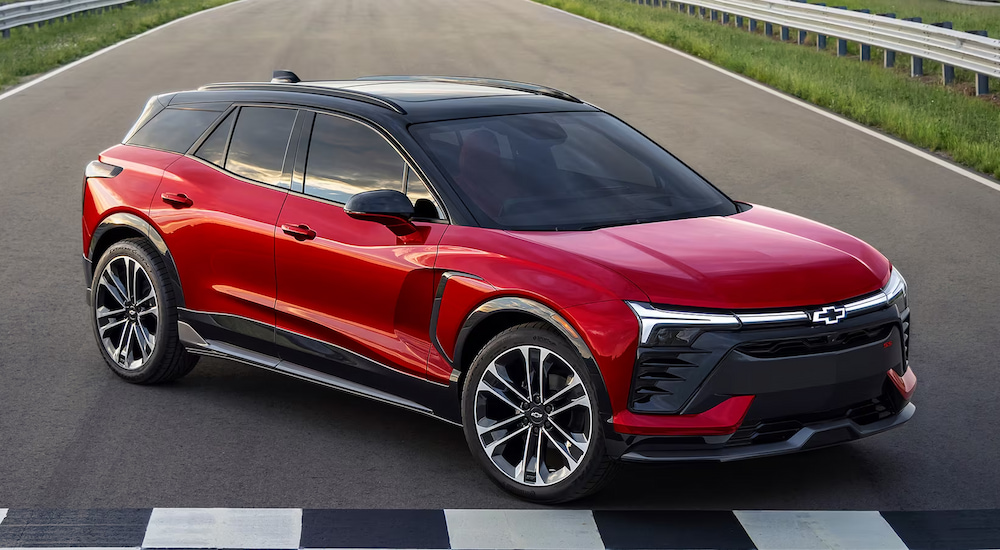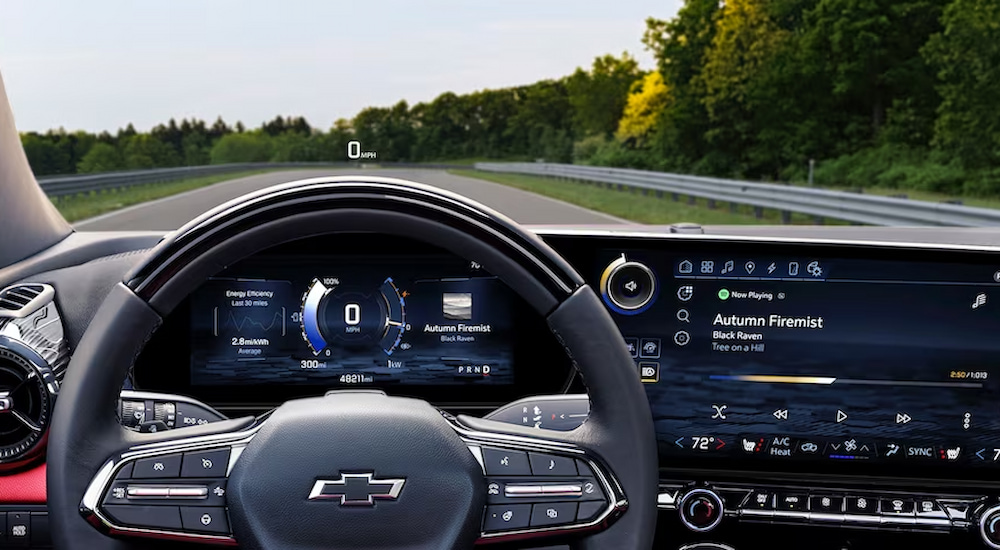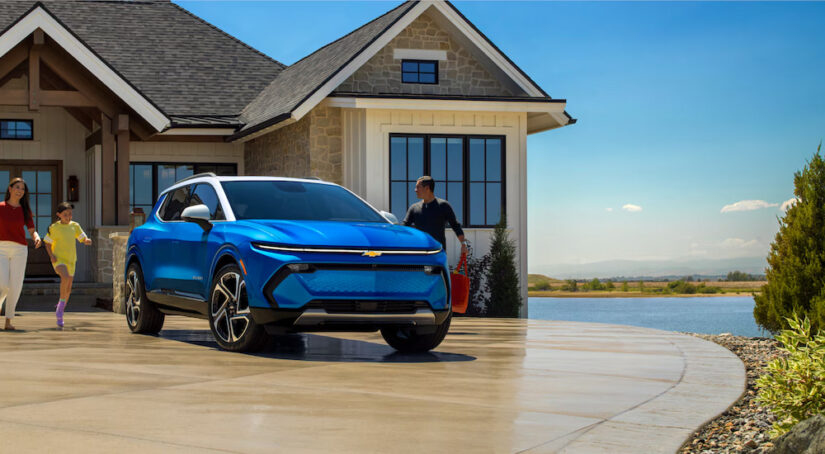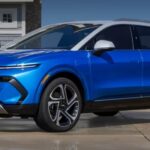If you head to your favorite Chevy dealer looking for a standard, gas-powered SUV, then you have half a dozen options to choose from, including subcompact models, compact, midsize, three-row, and full-size SUVs designed to meet the needs of pretty much any driver. But if you’re interested in an SUV with all-electric performance, on the other hand, then your options are much more limited, but you do have some options. Chevy’s previous forays into EV engineering included the Bolt EV and Bolt EUV, the latter being more of an SUV rather than the hatchback design of the former. But now, the Blazer EV and Equinox EV are Chevy’s latest electrified offerings with the functionality and convenience of an SUV. Let’s take a look at what each of these models has to offer to see if we can figure out which one is right for you.
Electrified Performance and Range
It’s safe to say that when it comes to choosing the right EV, one of the most important factors to consider is the kind of performance it offers including its available range from a full charge. Both of these vehicles utilize the latest GM Ultium EV platform, so they are fun to drive and offer excellent overall performance. That being said, there are still some key differences between them and the kind of experience they each offer.
The Chevy Blazer EV is a midsize SUV with two battery options available along with two different motor options, but they’re combined into just two configurations, so you can’t pick freely from them. It starts with an 85 kWh battery with a pair of motors, which is great, offering 288 hp and 333 lb-ft of torque—this setup gets an estimated 279 miles of range from a full charge. If you want to go further, then there’s a single-motor option available with a 102 kWh battery that delivers 340 hp and 325 lb-ft of torque, plus up to 324 miles of range. This gives you a model with the most power and range, but I wish we could combine batteries and motors.
Looking at the Chevy Equinox EV, it’s a smaller compact SUV that also has two motor options available, but they’re both paired with the 85 kWh battery that’s standard for the Blazer—no 102 kWh battery here. With a single motor, the Equinox EV provides 213 hp and 236 lb-ft of torque with an estimated 319 miles of range from a full charge; a pair of motors boosts performance to 288 hp and 346 lb-ft of torque, though range comes down to 285 miles. Ultimately, both of these models have pretty comparable numbers if you choose a configuration that favors either performance or range, but the Blazer EV lets you get optimal horsepower and range together.

Special Note: The Chevy Blazer EV SS
One thing I should mention before moving on from performance, however, is that the Blazer has another advantage here. Chevy has announced that a special Blazer EV SS model is on the way, which will be built for impressive performance and immaculate power. This model will feature a 102 kWh battery with a dual-motor setup that delivers 557 hp and 648 lb-ft of instant torque for a very impressive driving experience. Utilizing GM’s Wide Open Watts system—think of it as electrified launch control—the Blazer EV SS will go from 0 to 60 mph in less than four seconds. This feels like Chevy is taking aim at the Ford Mustang Mach-E with a performance-focused SUV, and I’m all for it. There’s nothing like this offered for the Equinox EV at this time, however, so keep that in mind.
Overall Design and Cargo Capacity
Even though these two SUVs are in different classes, they actually have quite a lot in common in terms of how well they can work for practical, everyday use. As I said before, the Blazer EV is a midsize model while the Equinox EV is a compact SUV—this results in some differences between them in terms of size and weight. The Blazer EV has 25.5 cu.ft. of rear cargo space inside and just over 59 cu.ft. of total cargo volume available. The Equinox, even though it’s a smaller compact option, has more than 26 cu.ft. of rear cargo volume and just over 57 cu.ft. of total cargo space inside—these numbers are very similar between them. This works out well for you if you’re shopping for an EV SUV, however, because it means you can look at other features on which to base your decision.
Interior Features and Tech
Interior similarities between these two models extend beyond how much cargo space they each offer, which is also good news. Looking at the 2024 Blazer EV, it features a very nice 17.7-inch Infotainment display standard on every model, paired with a large 11-inch driver information screen. Standard Google built-in is included with this system, along with an available wireless charging pad. You can even choose a racecar-inspired interior with a flat-bottom steering wheel and customizable ambient lighting to create a very welcoming cabin.
Looking at the 2024 Chevy Equinox EV, it also has a number of impressive tech and comfort features inside to elevate your driving experience. The starting 1LT model comes with a 17.7-inch Infotainment display along with an 11-inch driver information center (sound familiar?) with Google built-in. Available upgrades for the Equinox EV include customizable ambient lighting, heated front seats, and a heated steering wheel. As you can see, when it comes to starting features, these two models have a lot in common; again, this means you can focus on other details when choosing which vehicle is right for you.

Safety and Driver Assistance Features
As far as I’m concerned, and I’m not shy about saying this, nothing is more important when it comes to a vehicle than how well it can keep you safe on the road. Both of these EV SUVs come with the Chevy Safety Assist package standard, which is exactly what I like to see. This includes a Forward Collision Alert with Automatic Emergency Braking plus Front Pedestrian Braking to help you avoid any type of collision. It also features Lane Keep Assist with a Lane Departure Warning, plus a Following Distance Indicator to warn you if you’re too close to the vehicle ahead of you. IntelliBeam automatic high beams round out this collection of standard features to help you avoid blinding other drivers while on the road. All of this is great and precisely what I’ve come to expect from Chevy at this point.
Both of these models take things further, however, with an impressive list of additional driver assistance features provided with every model. This includes Rear Park Assist to help with navigating tight parking spots, Reverse Automatic Braking, and Adaptive Cruise Control. Every model also comes with Rear Cross Traffic Braking and Blind Zone Steering Assist to help you avoid merging into someone lurking in your blind spot. All of these systems are in addition to the standard Chevy Safety Assist package, making them both great choices for a vehicle that can help protect you and your passengers.
Which EV SUV Has What You’re Looking For?
As you can see, both of these EV SUVs have a lot in common, including the safety features they offer and many of their interior tech and comfort features. You can even get GM’s hands-free Super Cruise driving system on both models, though it’s available on certain trims and not standard on either of them. One of the biggest differences between them is the kind of performance they offer, with the midsize Blazer EV having much greater horsepower combined with its highest-range offering. To get the most range with the Equinox EV, you have to miss out on its most powerful configuration, which is a shame. The other big difference between these two models is their price: the 2024 Equinox EV starts at $41,900 MSRP right now, while the 2024 Blazer EV starts at $48,800.[a] That’s a pretty substantial difference; depending on what your budget looks like, it could make the decision for you. Either way, these are both great EV SUVs designed for daily driving and enjoying yourself every time you hit the road.



